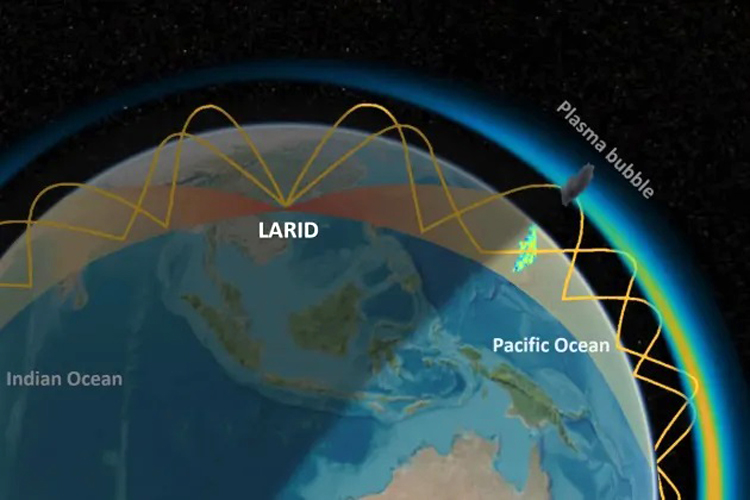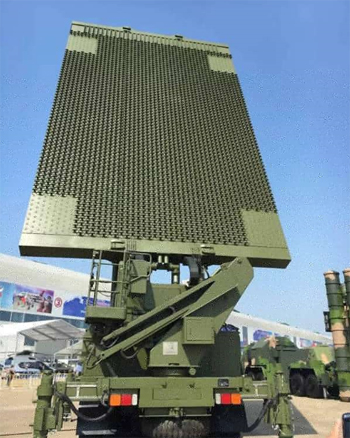INDIAN ARMED FORCES CHIEFS ON OUR RELENTLESS AND FOCUSED PUBLISHING EFFORTS

The insightful articles, inspiring narrations and analytical perspectives presented by the Editorial Team, establish an alluring connect with the reader. My compliments and best wishes to SP Guide Publications.

"Over the past 60 years, the growth of SP Guide Publications has mirrored the rising stature of Indian Navy. Its well-researched and informative magazines on Defence and Aerospace sector have served to shape an educated opinion of our military personnel, policy makers and the public alike. I wish SP's Publication team continued success, fair winds and following seas in all future endeavour!"

Since, its inception in 1964, SP Guide Publications has consistently demonstrated commitment to high-quality journalism in the aerospace and defence sectors, earning a well-deserved reputation as Asia's largest media house in this domain. I wish SP Guide Publications continued success in its pursuit of excellence.
China's LARID Radar
The Low Latitude Long Range Ionospheric Radar's (LARID) ability to detect plasma bubbles and stealth aircraft offers significant military implications, enhancing China's early warning capabilities and improving the performance of its radar systems, particularly for over-the-horizon detection
 |
The Author is Former Director General of Information Systems and A Special Forces Veteran, Indian Army |

China has been focusing on advancing its radar technology for tracking stealth and hypersonic platforms in anticipation of a future clash with the US-NATO in the race to dominate the world and acknowledging that technological supremacy can completely shift the balance of power. China had displayed its long-range SLC-7, JY-26 and YLC-8E radar systems at the World Radar Expo in the eastern Chinese city of Nanjing in April 2021. China is developing even more advanced systems such as metric wave, quantum and laser radars to further improve Chinese military's tracking capabilities.
The SLC-7, developed by the Nanjing Research Institute of Electronics Technology, can detect and track multiple targets at the same time, withstand saturation attacks, adapt to jamming, and rapidly identify targets, according to the Global Times.
China has been advancing radar technology to track stealth and hypersonic platforms, preparing for potential clashes with the US-NATO and aiming for technological supremacy to shift the global balance of power.
The JY-26 is called the 'F-22 killer' and can also identify and track other stealth objects like the B-2 bomber and F-35 stealth fighter aircraft. The YLC-8E can detect and track aircraft more than 500 km away as well as missile threats up to 700 km. According to the Global Times, these three radar systems are only a small portion of China's anti-stealth radar family.
China has also displayed the KLJ-7A fire control radar carried by fighter aircraft, SLC-7 three-dimensional early warning radar, YLC-8E anti-stealth early warning radar, YLC-18 low altitude defence radar, YLC-48 portable multifunctional reconnaissance radar nicknamed drone terminator, among others.
In July, 2024, a team led by Professor Zheng Xiaoping from Tsinghua University's Electronic Engineering Department claimed to have developed a radar system with remarkable capabilities that can differentiate between real and false targets. China said this radar system is so advanced it can track not one, but 10 hypersonic missiles simultaneously, each hurtling through the atmosphere at a speed of Mach 20 – twenty times the speed of sound. This development is viewed in response to the US air-launched hypersonic missile tests conducted on Guam during March 2024. America's tests of hypersonic weapons in Guam aimed at 'reducing' China's lead in radar technology.
In July 2024, Chinese researchers developed a radar capable of tracking 10 hypersonic missiles simultaneously at speeds up to Mach 20, responding to US hypersonic missile tests.

China's compact and lightweight design of this microwave photonic radar, having a detection range of 600 km makes it suitable for integration into air-defence missiles or aircraft. The effectiveness of this radar system, tested through ground-base simulation demonstrated exceptional precision, with an error margin of only 28 cm when estimating the distance of a missile moving at nearly 7-km per second. As per the findings published in the Chinese journal 'Optical Communication Technology' of May 24, the radar system also achieved up to 99.7 per cent accuracy in determining the missile's velocity.
The radar use lasers for information transmission between key components at light speed, which overcomes limitations of traditional radar systems. By incorporating photonics, the new radar can generate and process more complex microwave signals, enabling precise measurement of ultra-high-speed objects for the first time.
In September 2024, China claimed it has developed the world's most powerful radar that can detect 'rare' plasma bubbles and stealth aircraft. The radar, known as the Low Latitude Long Range Ionospheric Radar (LARID), was developed by the Institute of Geology and Geophysics under the Chinese Academy of Sciences and was installed last year. The report claimed that the breakthrough came last year during a solar storm from November 4-6. The LARID system successfully detected radar echoes from plasma bubbles forming over North Africa and the Central Pacific.
China's new microwave photonic radar, which uses lasers for high-speed information transmission, demonstrated exceptional accuracy with a margin of just 28 cm when tracking missiles moving at nearly seven km per second.

LARID has the unique ability to detect plasma bubbles, "an anomalous weather phenomenon" that can disrupt satellite communications and GPS systems by interfering with the ionosphere — the part of Earth's upper atmosphere populated by charged particles. These plasma bubbles, which can grow to hundreds of kilometers in size, are typically seen in low-latitude regions. LARID can detect plasma bubbles as far as 9,600 km away.
The radar's unprecedented detection range allowed scientists to monitor these bubbles as they formed and moved across regions separated by vast distances. Located on Hainan Island in southern China, the radar's detection range has tripled since its initial deployment, expanding from 3,000 km to nearly 9,600 km. Advances in signal processing and geophysical simulation models have made the extended range reach approximately as far as Hawaii to the east or Libya to the west.
LARID operates within the 8-22 MHz frequency range and comprises two radar subsystems, each equipped with 24 transceiver antennas facing east and west. Its advanced, fully digital phased array system allows real-time adjustments to detection parameters such as frequency, range, and radar coding, enhancing its adaptability and effectiveness.
The Low Latitude Long Range Ionospheric Radar (LARID) can detect plasma bubbles that disrupt satellite communications and GPS systems, with a detection range of up to 9,600 km.
Chinese researchers believe the discovery will have major implications for global communications and navigation systems, offering the potential to mitigate the negative impacts of plasma bubbles on satellite signals. Traditional radar systems struggle with targets beyond the horizon due to the Earth's curvature. In contrast, LARID utilises high-power electromagnetic waves that bounce between the ionosphere and the ground, allowing it to overcome this limitation. LARID has reportedly achieved notable success and has significant military implications. The detection of plasma bubbles can greatly affect modern military operations, particularly satellite communications and GPS systems; a fire-control radar capable of tracking hypersonic targets with high precision for interceptor missile systems.
The LARID network would enhance early warning capabilities. Similar over-the-horizon radar technologies are already deployed by the PLA – reports indicate the successful detection of stealth US-made fifth-generation fighter aircraft like the F-22. Some new PLA warships, such as the 055-type destroyers, are also equipped with radars capable of detecting stealth aircraft. These radars utilise wavelengths that penetrate stealth coatings, potentially reaching detection ranges of hundreds of kilometers.
Finally, in the aerial arms race, technological advancements in hypersonic missiles, stealth fighters and counter-measures to defeat them is likely to continue.





